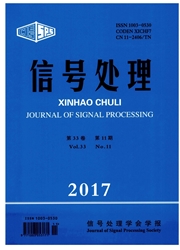

 中文摘要:
中文摘要:
双通道合成孔径雷达(SAR,Synthetic Aperture Radar)具有巨大的地面慢动目标的检测潜能,备受国内外SAR—GMTI(Ground Moving Target Indication)研究者们的青睐。现有的双通道SAR图像域地面慢动目标检测算法,都可归为对协方差矩阵的合理分解和变换。本文分析和对比了各种基于协方差矩阵的慢动目标检测算法:首先,对现有算法进行了归纳分类,在此基础上分析比较了每类算法的基本原理,并阐明了它们各自的优缺点。进而,结合实验验证,分别从杂波抑制能力、稳健性、动目标ROI(Region of Interest)获取精度、多视处理的影响以及抗干扰性等方面作了进一步地对比分析,全面总结了现有算法的检测性能。最后,结合现有算法存在的不足,指出寻找更优的动目标检测量的攻关方向,完善和发展了双通道SAR地面慢动目标检测理论。
 英文摘要:
英文摘要:
Dual-SAR shows great potential for detecting the slow ground moving targets. Thereby, lots of SAR-GMTI researchers pay more attention to that. All of the existing dual-SAR images algorithms for slow ground moving target detection are based on the reasonable use of covariance matrix' s elements. Firstly, according to performance analysis and comparison of the slow ground moving target detecting algorithms based on covariance matrix, all of the algorithms are divided to three kinds. Then, on the basis of analyzing the basic detection theory of each algorithm, the paper illuminates their advantages and shortages. Furthermore, Combining with simulated results, further analysis and comparison are made in term of clutter rejection, the stabilization, acquirement of moving targets' ROI, the influence of muhilook, anti-jamming. Lastly, by summarizing the shortages of each algorithm, the paper indicates the further way of the better use of covariance matrix for detecting slow ground moving targets.
 同期刊论文项目
同期刊论文项目
 同项目期刊论文
同项目期刊论文
 期刊信息
期刊信息
